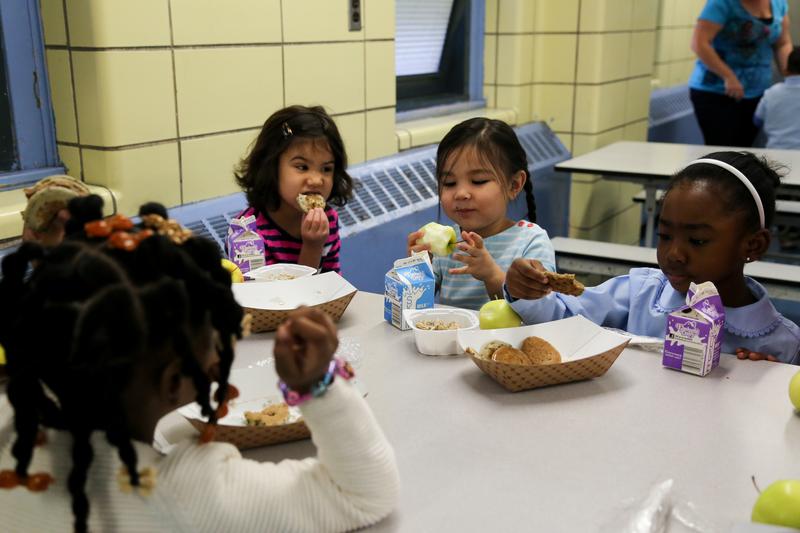
Starting Thursday, lunches will be free for all students in the New York City public schools, regardless of family income.
The change comes after a long push by advocates, who said that providing a free lunch to only poor students came with a social stigma for kids. They also said that some families, who just missed qualifying for the free or reduced price meal, were pressed financially to provide the $1.75 each day for a cafeteria lunch.
"This is a structural barrier that keeps kids who are hungry from eating," said Liz Accles, executive director of the group Community Food Advcoates, which spearheaded a campaign calling for universal free lunch.
"It's a health issue, it's an education equity issue — because you can't talk about education equity if kids are hungry," she said.
Accles and others, including Letitia James, the public advocate, and Melissa Mark-Viverito, the speaker of the City Council, had been vocal proponents of eliminating lunch fees in a city where 75 percent of students qualify for free or reduced price lunch as it is. The differentiating of kids according to income led to "lunch shaming" for those children who qualified for free meals in some cases, they said. It also put an undue burden on school principals to track down families who owed money for school lunches.
Elizabeth Rose, the deputy chancellor overseeing the school food program, said the city was able to roll out free lunch across the board this academic year because New York City newly qualifies for a higher level of reimbursement from the federal government. It costs $3.32 for the city to produce an individual school lunch, but it had been only partially reimbursed for that amount.
The increase in funds comes thanks to a change in the way data is collected on needy families, not because of an increase in families in poverty, Rose said.
Rose pressed, however, that it was still vital for families to submit paperwork reporting individual family income levels to schools, since Title I funds are distributed to schools based on the number of low-income families they enroll. She said that even though the city was receiving more funding for school meals across the board, the school-level forms were still the best way for city officials to get an accurate count of its students from low-income families.
As a pilot program, the city began providing free lunch in middle schools starting in the 2014-2015 school year. School officials said they saw a 6 percent increase in the number of students participating in the lunch program during the pilot.
New York City already provides free breakfast for all students.
